Please type a search term (at least two characters)
Highlights from Energy projects
Integrating renewable fuel into European pipelines
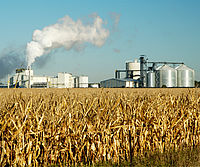
Europe is the world leader in the production of biogas, a form of renewable energy generated from carbon neutral sources. However sustainable development policies require that these types of fuels have ‘trackability’ in terms of their biological and geographical origin. Furthermore, to enable access to the existing transportation and storage infrastructure used by natural gas – and reassure purchasers of the quality and calorific value - requires the precise characterisation of these gases. Biofuels often have a more varied and heterogenous composition than conventional ones and to make these measurements is challenging. The EMRP projects Characterisation of energy gases (ENG01 GAS), Metrology for biofuels (ENG09 Biofuels) and Metrology for biogas (ENG54 Biogas), developed new techniques, measurement instruments and certified reference materials for the analysis of these complex mixtures. The research enabled the precise characterisation of contaminants, such as water, ammonia and particulates that have the potential to damage the transportation infra-structure. The research also demonstrated the applicability of using the existing ‘energy density equations’ currently used for natural gas – which is important for calculating the density of the gas during transportation and storage.
This information is vital for Europe to foster the growth in the production of non-conventional energy gases from renewable sources and to help develop more diversified and secure energy supplies.
Improved methods for measuring the efficiency of solar cells
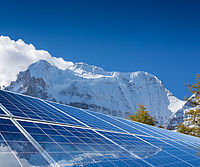
Since the 1980s the energy expected from solar cells has been determined based on three fixed measurements termed Standard Test Conditions (STC). However, STC does not take into consideration the real-world operating conditions where cells are installed, which can lead to a discrepancy between the predicted and actual energy output - with financial consequences.
The EMRP project Towards an energy-based parameter for photovoltaic classification (ENG55 PhotoClass) developed a more realistic way of determining performance by combining a wider range of measurements with climactic data from around Europe. The results have now been incorporated into new international standards for testing solar cells; which will better inform investors and help stimulate the uptake of new and existing solar technologies.
Reliable measurement of wind turbine drivetrains
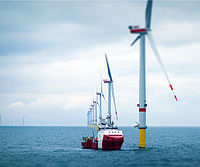
Europe’s impressive recent growth in wind energy generation capacity may need to continue for EU Renewable Energy Directive targets to be met. Yet the all-too-common sight of stationary wind turbine blades highlights a reliability issue limiting sector competitiveness. Income is reduced, and maintenance costs accumulate due to insufficient standards for ensuring component quality, and an absence of direct traceability for the instruments large enough to check production quality.
The EMRP project Traceable measurement of drive train components for renewable energy systems (ENG56 DriveTrain) developed techniques and standards so manufacturers can improve component reliability. For both Zeiss and Hexagon, participation led to upgrades of their measuring instruments, to offer direct traceability and heightened confidence for customers in the wind market.
Solving measurement challenges for smarter grids
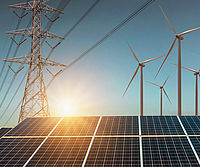
Incorporating renewables into Europe’s energy mix and evolving demands will lead to transformational change for Europe’s electricity distribution and supply infrastructures. Supporting industry efforts to address this challenge, EMRP research developed the measurement infrastructure required for the introduction of ‘smart’ grids.
Low-carbon electricity generation output is variable and often localised, requiring distributed networks, rather than existing, centralised, grids. Consumers will also expect networks to power transportation and for their meters to be accurate and secure. Smart grids are a proposed solution to changing patterns of supply and demand, designed to be more flexible and responsive, and ensure reliable connectivity.
Five EMRP projects developed solutions to the measurement challenges presented by this transformation. Metrology for high voltage direct current (ENG07 HVDC) addressed measurement challenges that support a reduction of losses in HVDC transmission to ease the introduction of renewable energy sources and Metrology for Smart Electrical Grids (ENG04 SmartGrid) developed new insights into the effect of renewables on power quality. Advances made by these 2009 EMRP projects were built on in 2013 projects, that focused on overcoming barriers to realisation. Measurement tools for Smart Grid stability and quality (ENG52 SmartGrid II) delivered a deeper understanding of stability issues and developed new methods for measuring grid stability and power. Sensor network metrology for the determination of electrical grid characteristics (ENG63 GridSens) developed cheaper, secure ways to monitor and control smart grids and Non-conventional voltage and current sensors for future power grids (ENG61 FutureGrid) investigated emerging sensor technologies for monitoring smart grid ‘health’.
Lighting the path to lower energy use
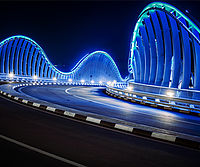
European household energy consumption has fallen over 1% almost every year since 2005 – largely driven by EU ecodesign regulations regarding the use of energy efficient appliances. Light emitting diodes (LEDs) use less power than traditional filament or incandescent lighting but newer types often have large or curved areas making the properties of these difficult to assess. Through the EMRP project Metrology for solid-state lighting (ENG05 Lighting) and its follow-on project, Metrology for efficient and safe innovative lighting (ENG62 MESaIL), new instrumentation and reference standards were developed to help validate manufacturer’s performance, reliability and lifetime claims. This new set of tools will aid in the uptake of this technology and allow it to demonstrate adherence with current European regulations.
